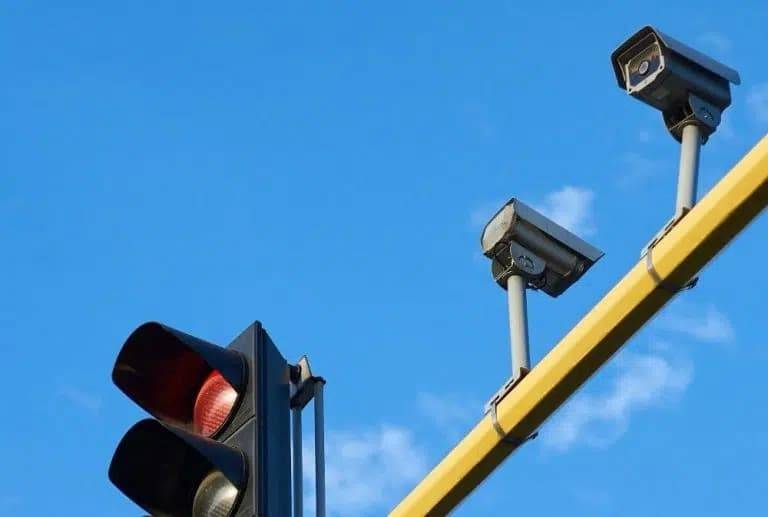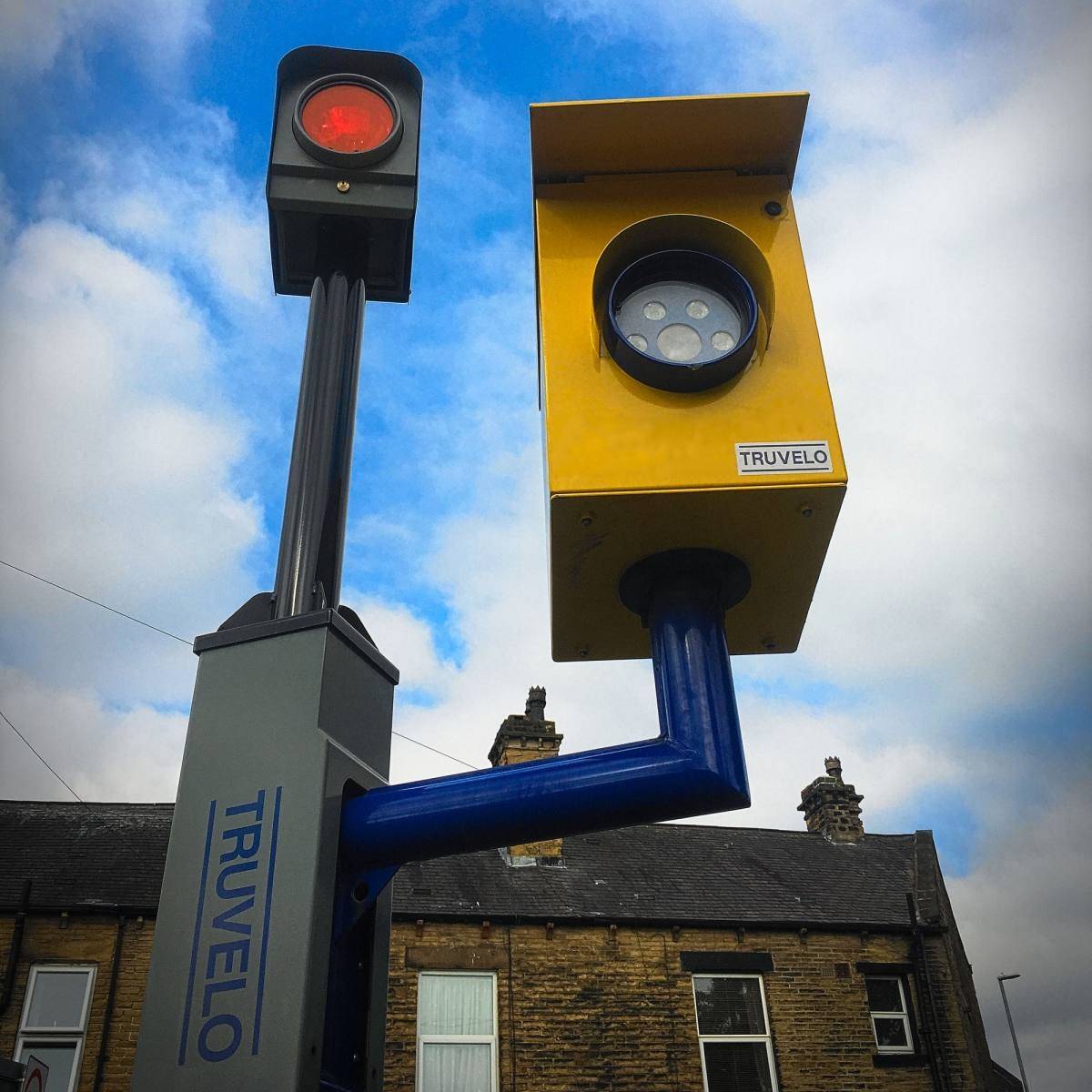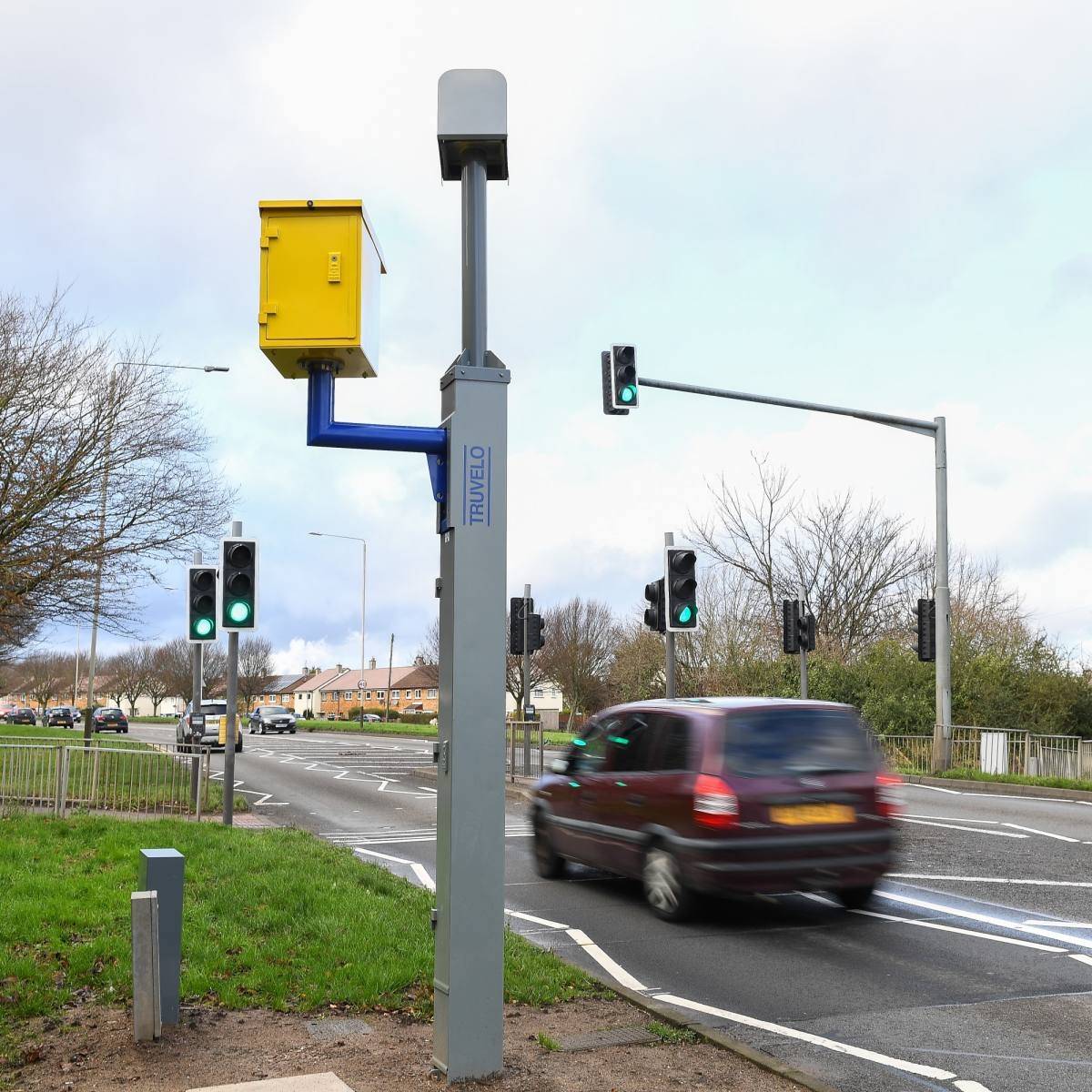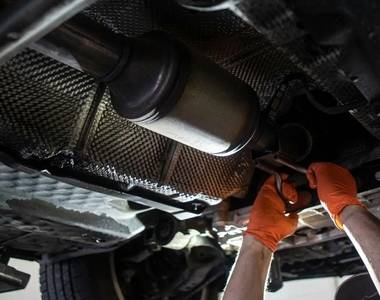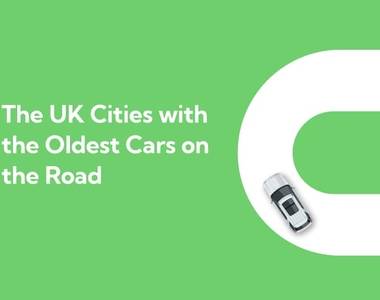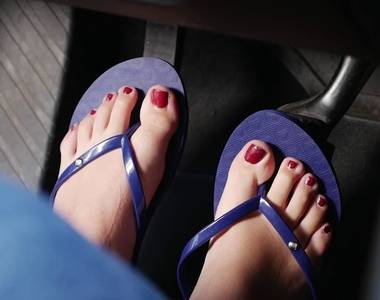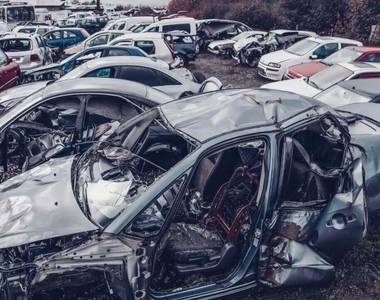Every year, hundreds of thousands of UK drivers are caught speeding or blowing through red lights.
The reason for this, of course, is that 7,000+ cameras are scattered across the UK's road network, including hundreds of red light cameras across all the major cities. In London alone, there are 250 red light cameras, with some intersections having multiple.
With such a high volume, you're bound to get caught if you're the type to speed up when you see an amber light.
To help you avoid the unnecessary expense and frustration of a red light camera ticket, we've compiled everything you need to know about UK red light cameras.
What happens when you run a red light?
The camera system is connected to the traffic lights. When you run a red light, the camera uses sensors embedded in the road surface or radar technology to detect your vehicle's presence in the intersection. Once they detect the violation, they'll capture multiple photographs.
These images typically include:
- A clear image of the vehicle
- The number plate
- The position of the vehicle relative to the stop line and traffic light
The internal computer uses ANPR (automatic number plate recognition) technology to identify the vehicle owner, based on the number plate.
Some cameras have a grace period (less than half a second). Others will take the photo as soon as the light changes from amber to red.
Possible penalties for running a red light
If a red light camera catches you driving through an intersection when you should be stopped, the minimum penalty is a £100 fine and three points on your driving licence. The actual penalty you get, however, depends on the severity of the violation and your driving history.
Can you lose your license for running a red light in the UK?
While the standard penalty is just £100, yours may be more severe if you've already accumulated points on your license.
For instance, building up to 12 points within a three-year period will result in a totting-up ban, which bars you from driving for 6+ months. That means that if you've already amassed nine points, you could face a driving disqualification and a heftier fine.
Similarly, speeding or causing an accident could land you with a much larger fine than if you simply ran the red light. The fine will also be higher if you are a repeat offender.
You can easily check your driving licence record using the government's website.
Red light offences also affect your insurance.
You also have car insurance to worry about. When you renew your insurance at the end of a 12-month period, you'll need to declare any driving convictions you've received in that year. Your insurer will probably increase your premiums if you have a red light camera violation on your record.
What if you accidentally ran a red light?
It doesn't matter. The camera only knows whether you've passed the stop line while the traffic light was red. It cannot differentiate between intentional violations and those that were unintentional.
The only way you can challenge a red light camera ticket is to prove that (a) the traffic light system was defective, causing you to mistakenly run the light, or (b) the signage around the intersection was unclear.
Types of red light cameras in the UK
Red light cameras aren't usually on the traffic light post. You'll generally see them mounted on a pole or attached to the side of the road, painted yellow. They're put at a distance — that way, they can capture the entire intersection and the vehicle's position.
Let's take a closer look at the different types of cameras you'll see on the road:
Gatso RLC 36
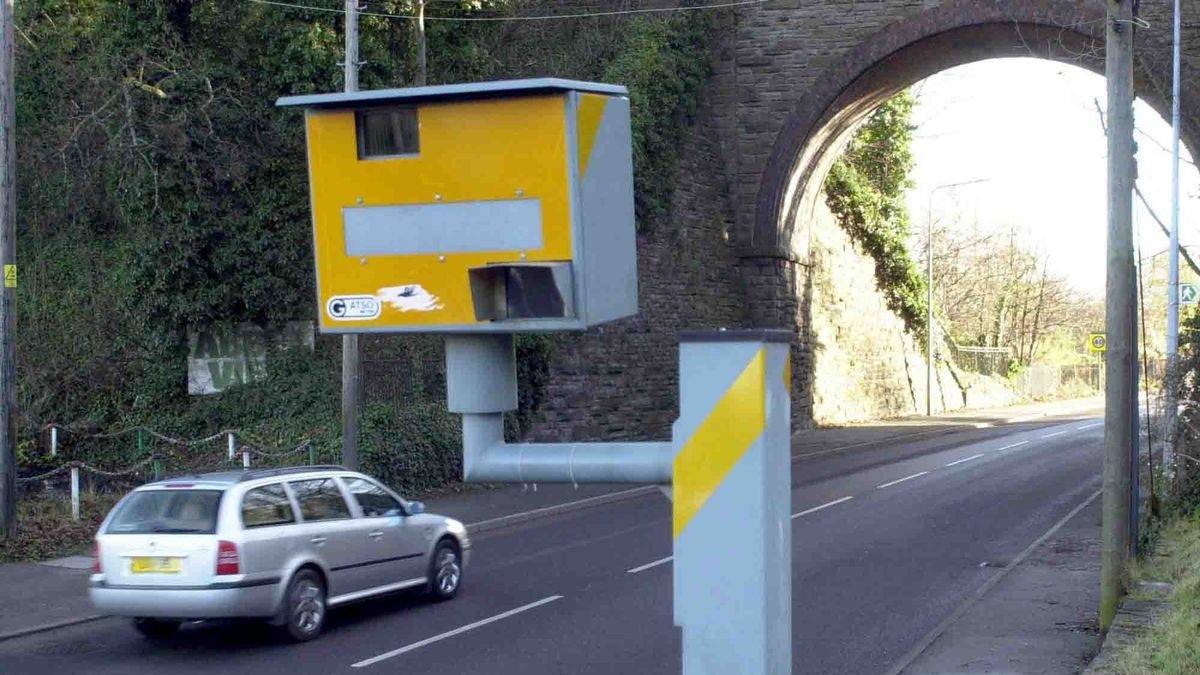
These are the oldest and most recognisable red light cameras in the UK. Manufactured by Gatsometer, these rearward-facing cameras are equipped with radar technology that allows them to function either as a red light or speed camera.
If you cross the stop line after the light has turned red, it'll capture a photo of your number plate and measure your speed.
Truvelo D-Cam
An increasingly widely used camera, the Truvelo D-Cam, monitors up to three lanes of traffic. It's a digital camera that captures speed and red light violations. They can be forward- or rear-facing, making them perfect replacements for older Gatsos.
The Truvelo D-Cam sits on a pole above the road, which can be lowered to download photos for processing (though it also sends them to an office for real-time procesing). It can hold up to 100,000 photos at a time.
Here’s what it looks like from the rear:
It also works quite differently from the Gatso. It uses sensors embedded in the road to detect vehicles that run red lights. The sensors tell the camera when to take a photo to capture clear images of the violation.
There is also an updated version of the standard D-Cam, the D-Cam L, which measures speed using a laser instead of sensors.
Monitron
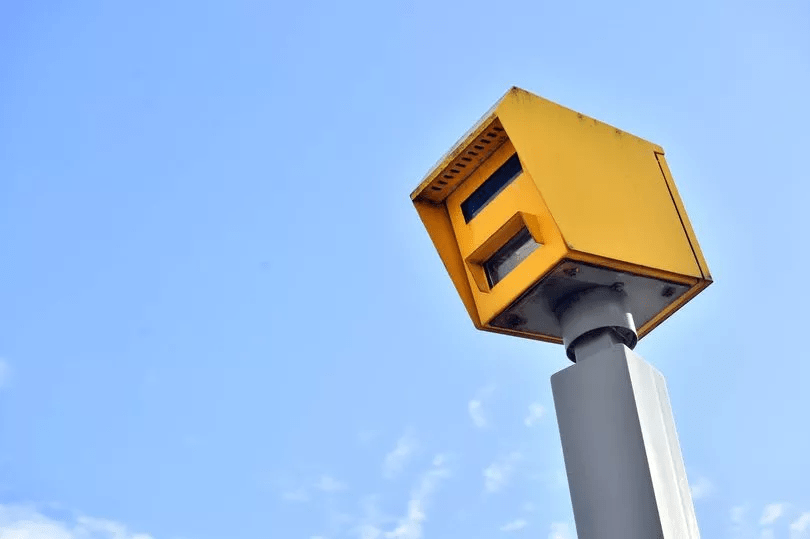
Monitron speed cameras are a modern class of digital cameras. The red-light-only cameras are called “RedGuard” and the ones that also capture your speed are called “RedSpeed”.
Unlike traditional radar-based systems, the SpeedCurb system uses three piezoelectric sensors (i.e., sensors that convert pressure to an electric charge) embedded in the road. They're positioned three meters apart to measure a vehicle's speed and capture red light violations.
When you run a red light, the camera takes three photos to provide evidence of the vehicle's progression through the intersection. The first two are wide-angle shots of the vehicle to show its location and progression through the intersection. The third is a close-up shot of the number plate, which identifies your car to the DVLA.
Typically, there are no road markings associated with these sensors. However, as older camera systems are upgraded to Monitron cameras, you may still see legacy road markings from the previous installations.
VECTOR and VECTOR-SR
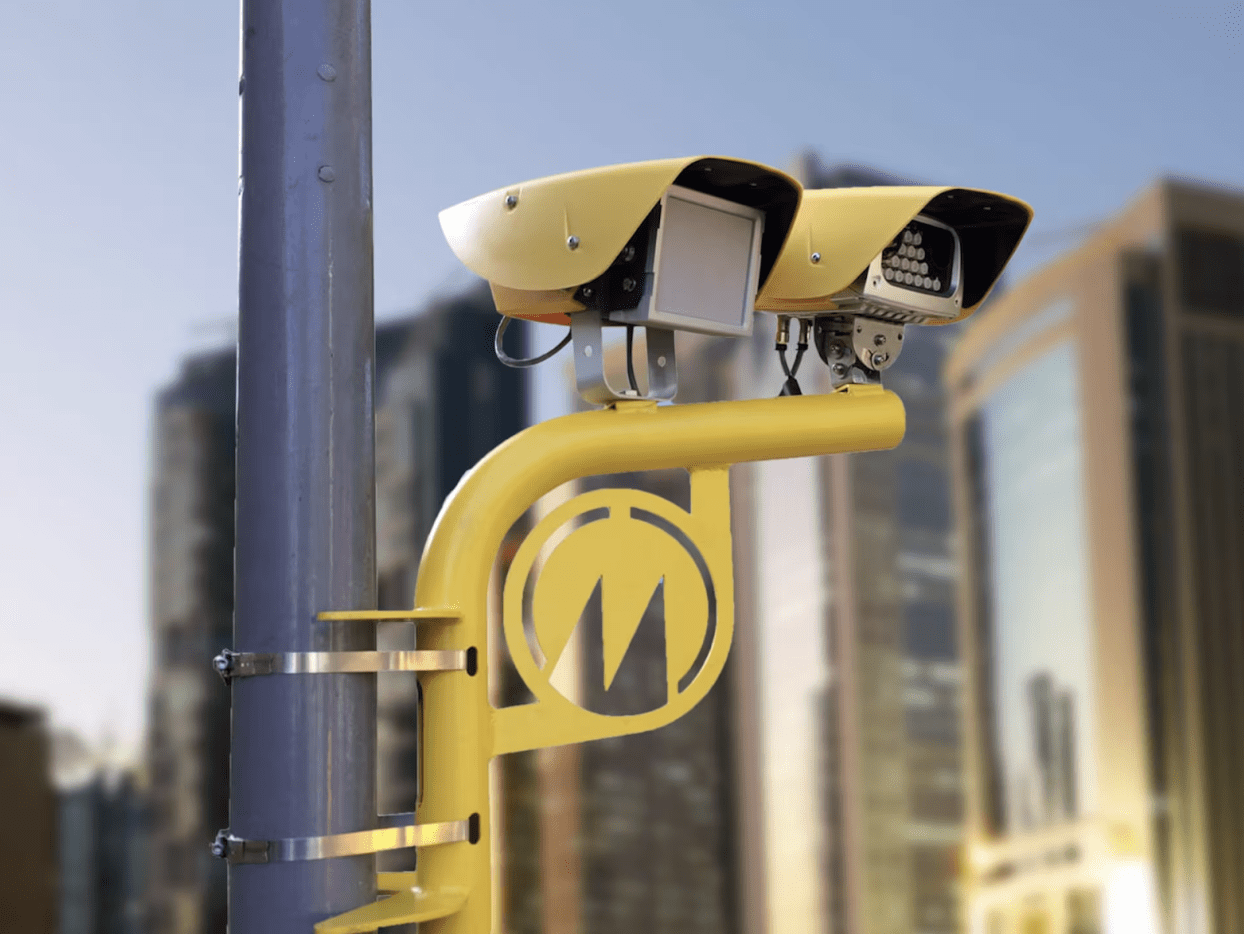
VECTOR cameras are the newest and most advanced additions to the UK's network of red light cameras. They're compact, two-lane, bi-directional cameras — that is, they can monitor two lanes of traffic going in opposite directions.
They're gaining significant traction across the UK as the cost of installation has come down from £1.5 million per mile to about £100,000 per mile. Currently, they're deployed in Greater Manchester, Glasgow, Edinburgh, Cornwall, and Wales.
The main difference between the Vector and other camera types is that they don't measure speed themselves. Instead, they use ANPR technology and timestamping to calculate the average speed of a vehicle between two or more points.
While they're primarily installed to capture speed, many are used to catch yellow box, bus lane, seat belt, mobile phone, congestion charging and, yes, red light violations. If you see one at the intersection, it doubles as a red light camera.
Do red light cameras flash?
Some older red light cameras will flash, but most will not.
The UK's red light camera network is designed to capture high-resolution images, even in low-light conditions. They can do so using either a visible flash or infrared technology.
Older systems, like Gatsometer's, use a visible flash to illuminate the scene when a violation occurs. This flash is usually bright enough for the driver to notice they've been caught.
Modern systems, like the Truvelo D-Cam and others mentioned above, use infrared technology. When newer cameras take photos of the vehicle and number plate, they aren't visibile to the driver.
When will you receive your red light ticket?
If you illegally run a red light, you'll receive a Notice of Intended Prosecution (NIP) within 14 days of the offence. The notice will request the vehicle's registered owner to identify the driver. You have 28 days to complete and return this form.
After identifying the driver, the DVLA will issue a Fixed Penalty Notice (FPN) — typically for £100.
If you believe there has been an error, you have the right to challenge the fine by filing an appeal. Possible grounds for appeal include proving that you did not run the red light or that there was a defect in the traffic lights or signage. Evidence, such as dashcam footage, is a helpful if this happens to you.
Can red light cameras also detect speed?
The UK's newer red light cameras double as speed cameras when the light is green. Dubbed "Speed on Green" cameras, they can measure the speed of your vehicle when it passes through the intersection, even if the light is green.
If you're speeding through a red light, the camera captures this information simultaneously. You'll be convicted of both if you're caught on camera.
Do all red lights have red light cameras?
Not all red lights have red light cameras to police them. However, there are almost always red traffic light cameras at crucial junctions — for instance, towards motorways and in busy city centres.
That's precisely why it's important to stop at red lights, slow down when the light turns amber, and drive the speed limit through intersections when the light is green.
Does Waze show red light cameras?
Waze will show red light cameras on the map, as well as speed cameras and mobile camera locations. It’ll even tell you when a camera is fake or out of use. But Waze is a contributor-led app — it only includes speed and camera locations if users report them.
Still, with over 2.1 million monthly users, it's one of the most reliable resource for alerting you to potential red light cameras on your route.
Traffic cameras vs. red light cameras in the UK
You probably see cameras all around you while driving on UK roads. Some are used for general traffic monitoring, like cameras mounted above motorways and at junctions to measure congestion levels. Others, like red light cameras, are specifically designed to enforce traffic laws and capture violations.
In reality, lots of the cameras you see on the road are there to collect data, manage the flow of traffic, find accidents, or surveil the area for security and crime purposes.
For example, the Highways Agency CCTV cameras:
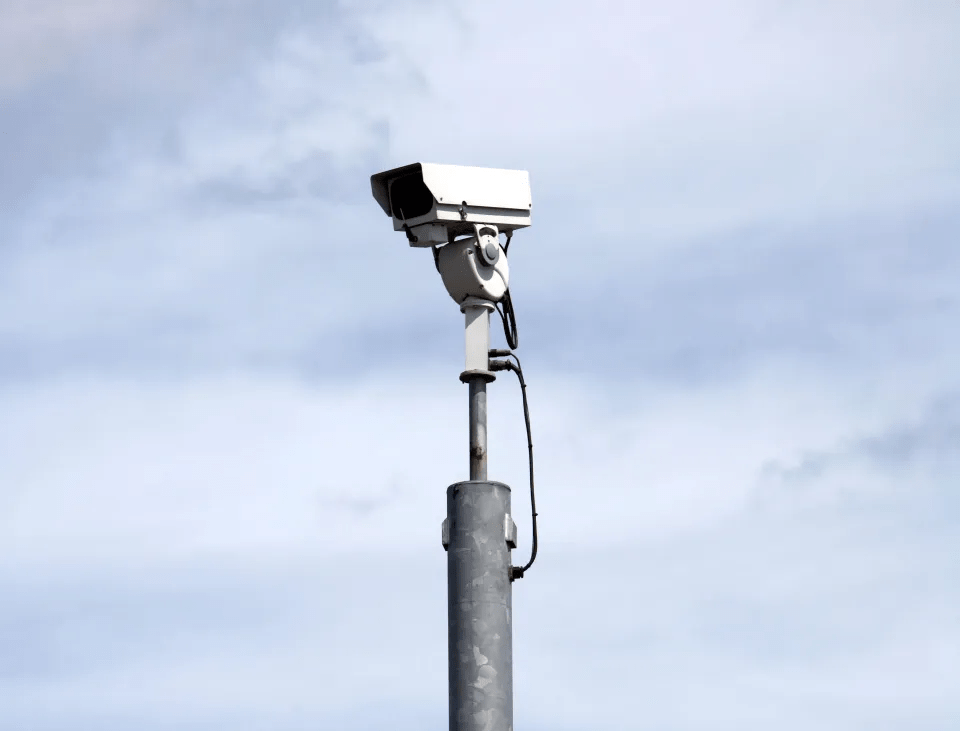
Or the Highways Agency ANPR cameras, which support traffic management:
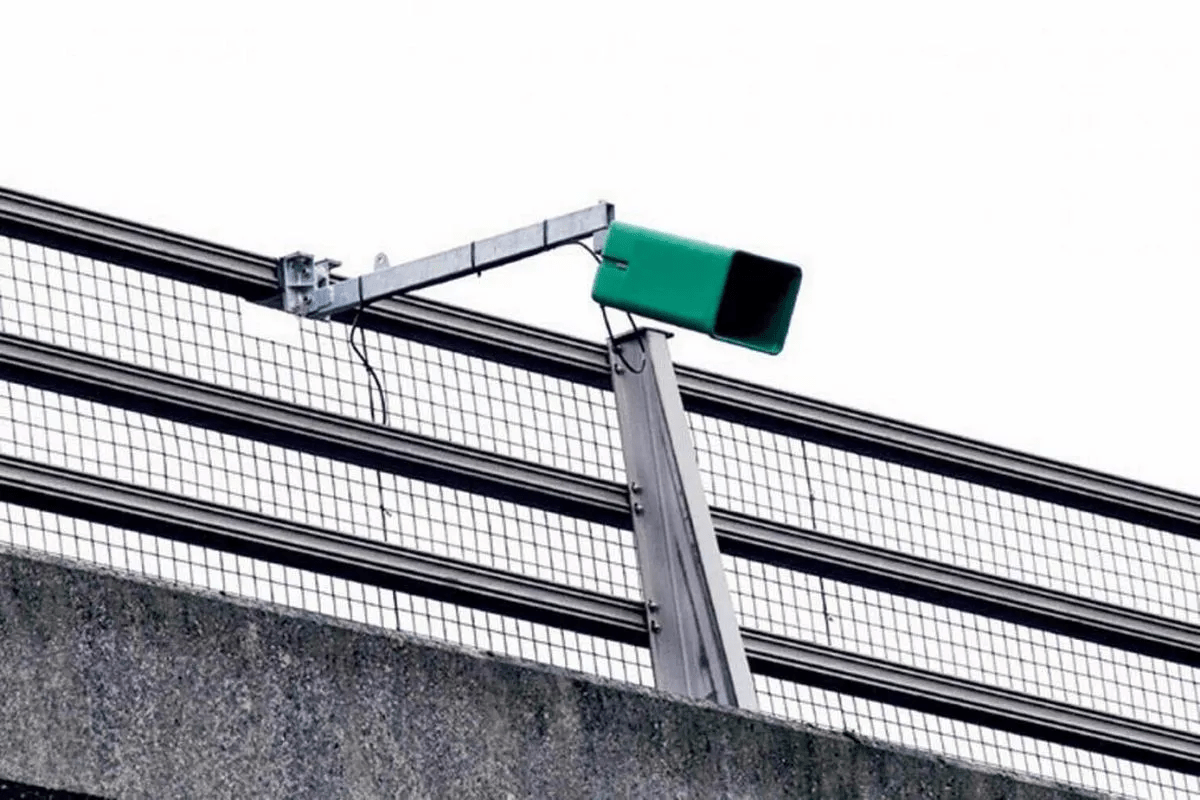
There are also numerous types of speeding cameras, including:
- Gatso speed camera
- Truvelo Combi-Cam TCD
- SPECS (also known as a 'HAD' system)
- VECTOR camera
- Truvelo D-Cam
- Monitron
While there's nothing in the law requirinig signage to indicate the presence of a camera, most councils place signs at fixed red light cameras locations to warn drivers. However, there's no guarantee that these signs are present or visible at all times.
Are red light cameras common in the UK?
There are thousands of cameras all over the UK, and hundreds of them are meant specifically to catch those who run or speed through red lights.
Unfortunately, there's no central database that tells you where each red light camera in the UK is located. They're placed at junctions and other high-risk areas to reduce accidents caused by red light violations.
Can you go left at a red light in the UK?
In the UK, left turns on red lights are not allowed. Drivers must wait for a green light before proceeding through an intersection, regardless of which direction they are turning. This is to ensure the safety of all road users and prevent potential accidents.
Which vehicles can go through a red light in the UK?
Exceptions to the red light law primarily apply to emergency vehicles such as those operated by:
- Police
- Fire and rescue services
- Ambulance services
- Bomb disposal units
- The National Blood Service
- The Serious Organised Crime Agency (SOCA)
- Special forces
These vehicles can proceed through red lights only when they are responding to an emergency call.
Other services like the coast guard or mountain rescue are typically not allowed to go through red lights unless specifically directed by police.
For regular drivers, the only time they can proceed through a red light is if a police officer explicitly directs them to do so.
The bottom line
Running a red light is, of course, illegal. But, it's also extremely dangerous. If another car is heading towards the intersection while you're going full-speed through a red, the collision could be catastrophic.
As a driver, it's your responsibility to pay close attention to road signals, drive the speed limit, and do everything in your power not to endanger yourself or other drivers. The added benefit to this, of course, is that you won't get a ticket!

